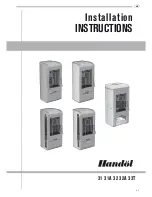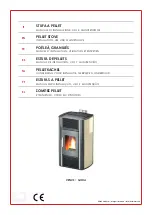
2.6 Connecting to a masonry chimney
Refer to building regulations & any other rules in force, including BS 8303 and BS EN
15287-1:2007.
A wall sleeve should be bricked securely into the wall of the chimney at the appropriate height and
the stove pipe inserted centrally. The pipe must not extend into the actual chimney opening, but
rather must reach only to the inside of the chimney aperture. The gap between the stove pipe and
sleeve must be sealed using suitable sealing packing rope. The chimney or flue way that the stove
pipe is connected must be of at least 125mm internal diameter or (ii) rectangular or square flues
having the same cross sectional and a minimum dimension of 100m for straight flues or 125mm for
flues with bends or offsets. Refer to current Building regulations, any rules in force including BS
8303 and BS EN 15287-1:2007.
2.7 Connecting to a steel chimney
Refer to building regulations & any other rules in force, including BS 8303 and BS EN
15287-1:2007.
If your installation involves taking the chimney straight up and through the ceiling, you
must
comply with National, Local Building Regulations or flue manufacturer‟s instructions concerning
clearances to combustible materials such as walls, floor joists and ceilings. The joint between the
stove flue collar and the stove pipe must also be sealed using the glass fibre rope provided. It is
important that the insulated flue system is properly supported both at ceiling level and at roof level.
The Stove
must not
bear the weight of the chimney system
(See chimney manufacturer‟s















































